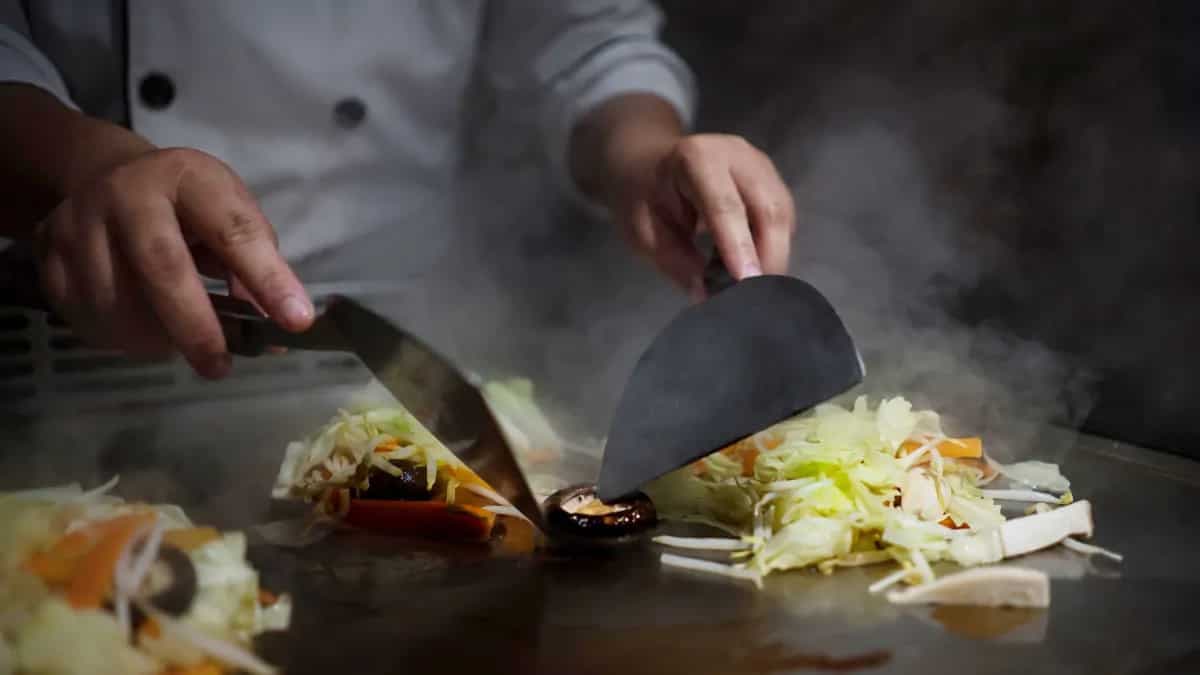When we go to a restaurant, the usual expectation is that you’d be welcomed warmly, seated at a nice corner and presented with the menu to order from. That’s what generally happens at any Japanese restaurant too, but there’s more that you can expect from a teppanyaki experience. It is not just about the food but the process of making it that adds to the charm.
For the unversed, teppanyaki is made up of two words, ‘teppan’, meaning iron plate, and ‘yaki’, meaning grilled food. The term is used to refer to a Japanese style of cooking with an iron griddle. Right from vegetables to meat and seafood, a plethora of things can be grilled on that hot plate. Now, one may ask what is so unique about this cooking technique? Well, the answer lies in the dining experience itself.
Once a diner sets foot in a teppanyaki restaurant, they’re in for a surprise after placing their order. The chef walks up to the table and sets up his iron griddle. Bringing all the ordered food items together, they are grilled hot. And it’s not just any ordinary grilling but actually an entire show. The performance cooking is what adds to the uniqueness of this Japanese form of art. However, this wasn’t always the case.

The origins of teppanyaki can be traced back to World War II, in the Japanese city of Kobe, where one of the first Japanese steakhouses appeared. The idea of cooking food on a propane- heated, flat, iron griddle is as old as 200 years but the performance method of serving diners arrived in the postwar era. The hibachi grills or fire bowls acted as a precursor to the teppanyaki method, where families in Japan would collectively prepare food in these heating bowls.
Gradually, there was a shift to iron plates and finally, after World War II, one saw a tendency to present the food in an entertaining way to its customers. The need for this style of cooking and serving arose when the American soldiers became the regular customers at Japanese restaurants. The post-war occupation by the US, in the face of heavy bombardment in Kobe, saw more hungry soldiers than locals in need to be fed.
A teppanyaki restaurant, called Misono, which is also considered one of the first steakhouses of Japan, claims to be a pioneer in this regard. The story goes that the founder had to serve an American officer who entered the restaurant as a customer. Originally an okonomiyaki i.e. a grilled pancake place, the officer wasn’t pleased with his order, and is said to have demanded beef to remind himself of his home. The beef steak replaced the pancake and the pancake place turned into what is known as a Japanese steakhouse for all the American customers.
Moreover, the spread of teppanyaki to the Western world can be accredited to the Benihana chain of restaurants who brought this style of cooking to limelight. With time, there was greater emphasis on the presentation of food and the process of making it while the flavours took a backseat. Chefs were urged to learn new skills and tricks to appeal to the diners and several of them became equipped with knife training and interesting tactics to flip and grill. A significant component of Japanese culinary history, what was once a humble family activity has transformed into an elaborate cooking show for the diners at the teppanyaki restaurants today.


